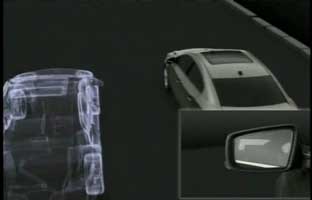Learn to Drive | Safety Devices to Look for When Buying a Car
Teens should learn to drive in the safest car possible. Since they normally learn to drive in the family car, parents with a new teen driver should consider getting a new family car with the latest safety features. There are many advances in automotive technologies that will help keep teens safe as they learn to drive. Developments in electronic sensing and control systems have allowed engineers to create several safety systems. They include devices providing increased crash protection and crash avoidance systems. These systems will help teens during those critical first few years of learning how to drive a car.
Some systems come as standard equipment on new vehicles as car makers continue to focus on safety of their vehicles. Multiple air bag systems is often a standard feature on some of the latest car models. So when it stime for your teen to learn to drive start looking at new cars and take note of which models offer the greatest safety features. Below is an overview of what some of these new safety features are.
Front Seat Air Bags:
Front seat air bags are not new but are a must. Most car makers have made them standard fo many years. They are designed to work in conjunction with the seatbelt. They are a supplementary restraint systems, providing added protection for drivers and front seat passengers. Advanced front seat air bag systems have sensors and multi-stage inflators to control the deployment of the air bag based on the characteristics of the passenger. They can even stop deployment for certain passengers.
Anti-Lock Braking System (ABS):
Anti-lock brake systems have also been around a long time and often come as standard equipment. They automatically control the pressure on the brakes to avoid wheel skidding and allow the vehicle driver to retain control of the steering. The latest advance in ABS is brake assist systems which apply the vehicle’s brakes fully in order to prevent a crash or reduce the crash severity.
Side Air Bags:
These air bags come in a variety of shapes and sizes. Some new model cars also provide side air bags as standard equipment. They provide head and or torso protection from side crashes. Cars may have one or more of the following: torso bags, head bags or head curtains.
Seat Belt Pretensioners:
These devices only activate in a crash and triggered by the air bags. They automatically tighten the seatbelt to remove any slack so the seatbelt can hold the occupant properly.
Seat Belt Load Limiters:
A load limiter allows the seat belt force to the chest to rise only to a certain point. This is important for the elderly who have less tolerance to high collision forces.
Electronic Stability Control (ESC):
Electronic stability control systems apply the car’s brakes or reduces the engine power to keep the car moving in the driver’s intended direction. This prevents loss of control of the car.
Traction Control Systems:
Traction control systems stop wheel spin. This very useful in slippery conditions when the car needs to accelerate. This same feature is found in formula 1 race cars.
Adaptive Cruise Control (ACC):
Adaptive cruise control (ACC) is able to sense the distance to the car ahead and automatically changes the speed in to keep a safe following distance.
Event Data Recorders (EDR):
Event data recorders are part of the air bag system. It stores information about the crash severity the actions of the driver before the crash.
Blind spot detection systems warn of cars or objects that are in the blind spot of the driver.
Backup Warning Systems:
Backup warning systems will provide an alarm if an object is behind the vehicle as it is backing up. Some backing systems also provide alarms if objects are approaching from the sides as you are backing out of a parking spot.
Night Vision Systems:
In the dark, and especially when it’s raining, it can be difficult to see pedestrians, cyclists, and animals on the road ahead. Night vision systems use the same technology employed by the military to let vehicle drivers “see in the dark” and identify such potential hazards.





